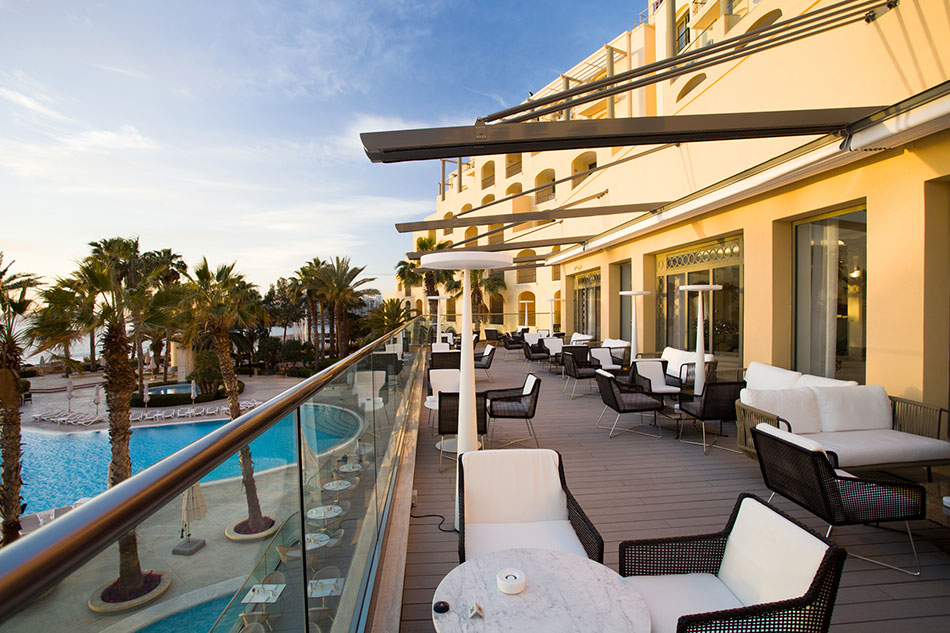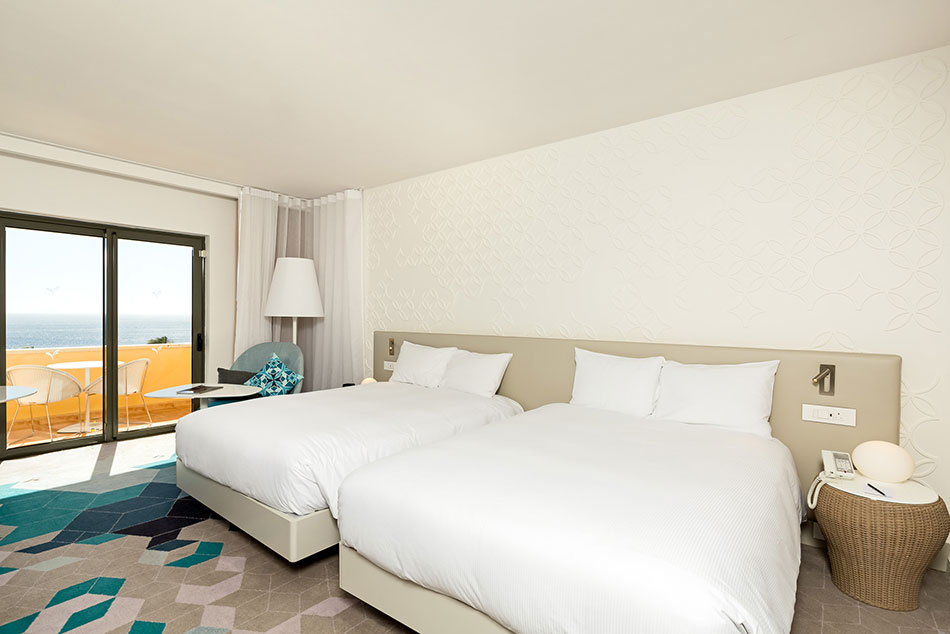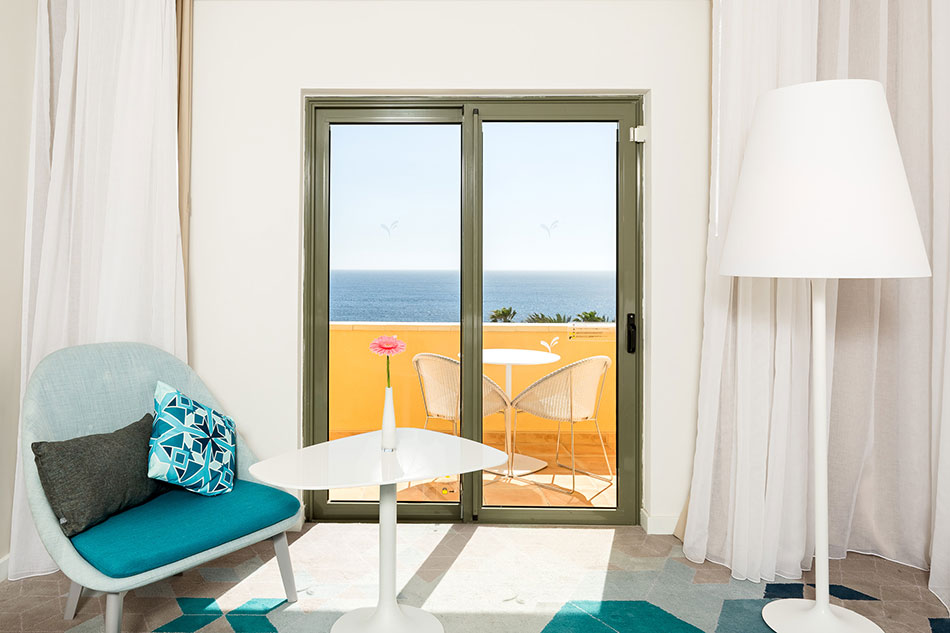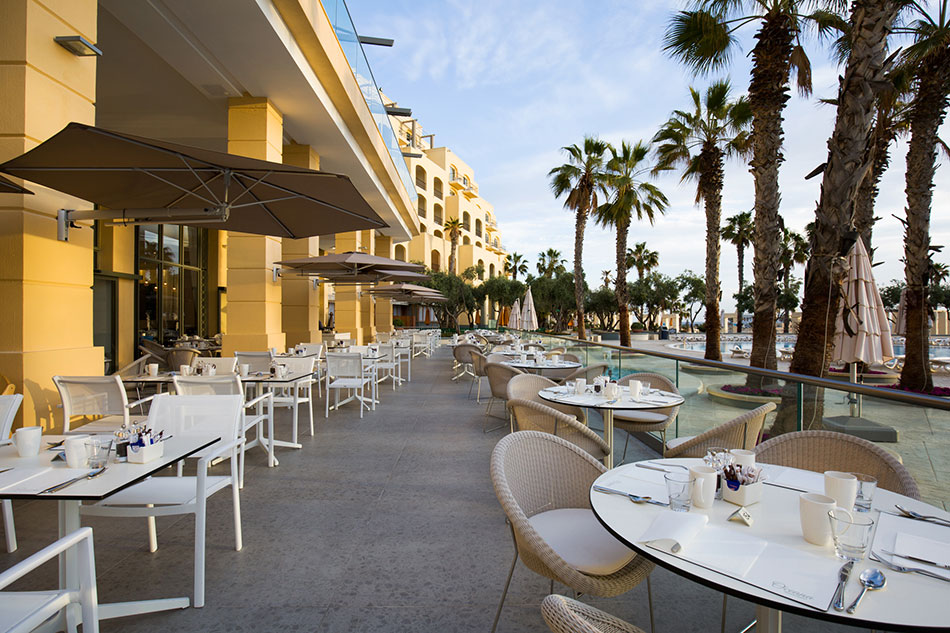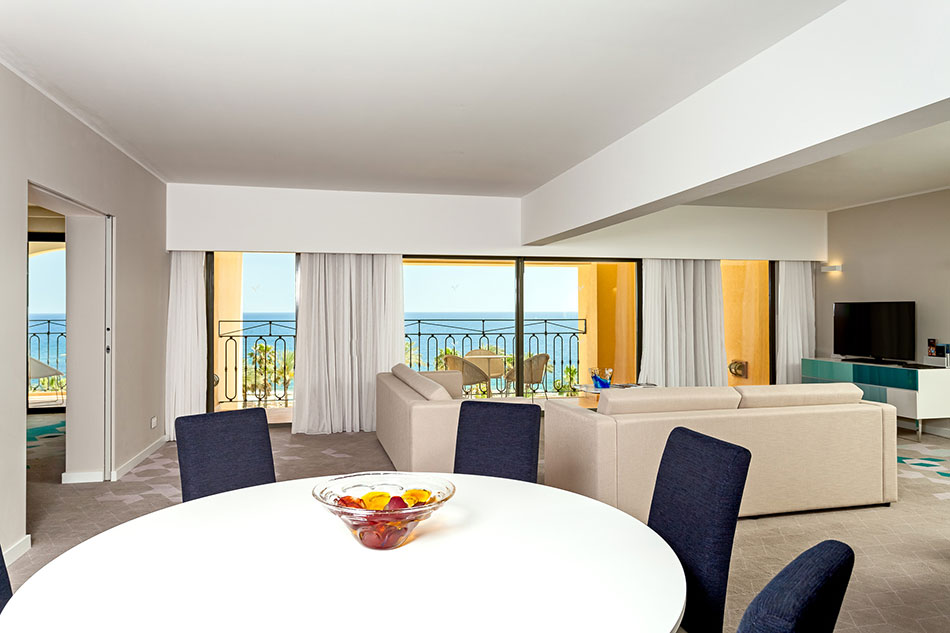Holy Hilton!
Hilton Malta’s huge face-lift by international Interior Designer Jean Philippe Nuel
Here, the designer, Project Manager Alphonse Camilleri, and Senior Director of Interior Designing for Hilton Worldwide Chris Webb talk about Hilton’s latest glamorous renovation.

Hilton Malta’s former design included several classic interior design elements such as furniture, marble and fabrics. The vision for the refurbishment was a much more contemporary one, where the decor creates a dialogue between different ages, without emulating any specific style.
The refurbishment of the public areas entailed extending the floor area of the Vista Lobby Bar, constructing a terrace overlooking the pool deck, completely refurbishing the restaurant area and also extending the area of the restaurant terrace. This increased the seating by 116 at the Vista Bar and 80 at the Oceana Restaurant.
The first talks related to the latest Hilton refurbishment date back to 2014, when the late Mr. George Fenech, in agreement with Hilton International, decided it was time to give Hilton Malta a face-lift. Project Manager Alphonse Camilleri then met with French interior designer Jean Philippe Nuel and his team to share various ideas.
Once the designs were submitted and approved, a ten-week window from the second week of February until mid-April was earmarked as a period in which the hotel could afford to close down to complete the works.

Alphonse says, “I remember being asked by Mr. Fenech if this was a realistic timeframe to complete all works within the public areas and the remaining 200 guest rooms and corridors. My initial response was “definitely not”, but upon giving it some more thought, I felt that I was up for the challenge and committed to complete the entire project within the stipulated ten-week period.”
The most challenging tasks for the Project Manager throughout the refurbishment included planning the works on site ahead of time, coordinating various trades, and executing the work once the project kicked off. “This meant that each day, out of the 60 available working days, was absolutely crucial; delays were not in our schedule. The constant monitoring and supervising of all the trades from before sunrise till after sunset was the only way to ensure that all ran smoothly.
My initial response was “definitely not”, but upon giving it some more thought, I felt that I was up for the challenge and committed to complete the entire project within the stipulated ten-week period.”
Obviously there were some unforeseen mishaps, but, being constantly at hand meant that I could immediately evaluate any situation and make a quick decision to find the ideal and most immediate solution. Halting works was never an option.”

Chris Webb, Senior Director of Interior Design, Architecture, Design & Construction of Europe Hilton worldwide said of the design: “At project inception I defined a design brief emphasising on the creation of a sense of place and casual glamour. We believe that undertaking extensive research before starting out any project is one of the key factors to our success. Here in Malta we wanted to celebrate the unique location, its colours, the heritage of the island and its unique patterns, motifs and style.”
Interior Designer Jean Philippe Nuel’s concept for the hotel was to highlight the seaside atmosphere of the place, without denying its classical architecture. The selected colour palatte for this project comprises a range of blue tones contrasted against the use of light tone woods to create a fresh and aerial ambiance.
Ample wood was used for both the floor and the wall panels, along with marble and new-generation tiles, reminiscent of raw cement tiles or imitation wooden flooring, which are both pleasing to the eye, as well as easy to maintain.

“To me, hotels are like the first sequences of a film; they must create a unique atmosphere. Every guest is entitled to end his or her film in their own personal manner, depending on the experience they had while spending time in the hotel.
“The décor should surprise and astonish without shocking… A hotel cannot be merely functional; it has to respond to the industry needs and must deliver both emotion and well-being. These two elements are the signature for a successful journey. While working on the design for Hilton Malta, I tried to reinterpret the quintessence of the place and its relationship with the sea.

“We imagined the hotel as some sort of portal, that takes the guest from the urban Portomaso to the natural elements of the seaside across.”
Chris Webb concludes, “Identikit hotels thankfully are continually vanishing. I firmly believe that a hotel and its design should tell a compelling story, and speak of the place in which it resides. Surely this is why we travel – to open our mind to new, exciting things; to learn. Apart from responding to the city in which the hotel is located, design should also subtly recall culture, location as well as the brand – it’s all about the detail.”

